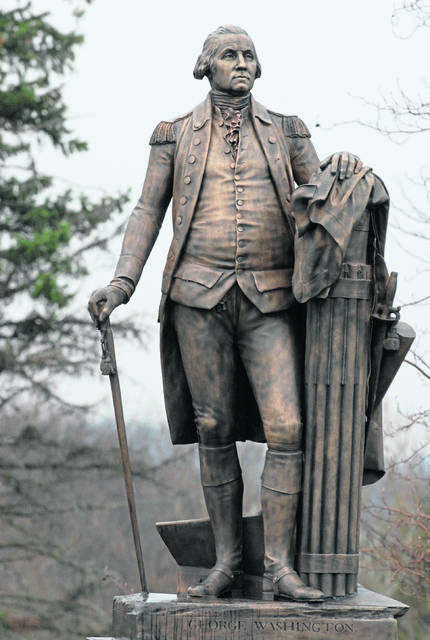John Oyler: Forging a character
Share this post:
I recently had the good fortune to be invited to give a presentation to the Historical Society of Collier Township. My subject was a summary of the seven workshops the Bridgeville Area Historical Society just completed, dealing with George Washington’s seven visits to Western Pennsylvania.
Coming up with a title for the talk proved to be easy — a common theme running through the workshops was the way these experiences helped convert an ambitious, athletic 21-year-old into a world-renowned statesman. Hence, “Forging a Character.”
The audience was impressive. In addition to Sal Sirabella, Gene Czambel, and a nice group of Collier Township folks, it included Earl Edwards from the Moon Township Historical Society, Noreen Beatty from the Old Stone Tavern Friends, and Debbie Lynch from the Pioneers West Historical Society. It felt like a convention of local history buffs.
Washington’s dangerous “Mission to Fort LeBouef” late in 1753 and his escape from two nearly fatal incidents solidified his confidence in his own ability and his destiny to become a significant leader. The successful battle of Jumonville Glen followed by his inglorious defeat at Fort Necessity the next year taught him humility, while bringing him fame in the colonies and notoriety internationally.
Serving as aide-de-camp to Gen. Edward Braddock in the 1755 campaign to capture Fort Duquesne, he again defied death in the disastrous defeat, then deftly organized a safe retreat, salvaging the major portion of the army. Valuable lessons in fighting troops of the Regular British Army were learned, lessons that would prove effective in years to come.
After fighting “Indians” in Virginia for the next three years, he led his colony’s militia as part of Gen. Forbes’ successful expedition to destroy Fort Duquesne in 1758. An additional incident in which he unselfishly risked his life added to the legend of his invincibility.
His peacetime career as a country gentleman at Mount Vernon was interrupted by an ambitious trip to the Ohio country in 1770, which included an impromptu meeting with erstwhile enemy, Seneca Chief Guyasuta. Washington’s understanding of the frontier gained in this trip profited him well in later years. His return trip brought him down through the Chartiers Valley. His journal called it “Shurtees.”
This knowledge was reinforced in 1784. After seven hard years commanding troops in the revolution, he returned to Western Pennsylvania to inspect his land holdings here and to investigate possible alternatives to connect the Potomac River with the Ohio. A disappointment in this trip was his inability to resolve a dispute with squatters on his Millers Run property.
When our new nation tapped Washington as its first president, he and his colleagues in effect invented a new form of government. Confronted by open rebellion in 1794, he responded with overwhelming force to crush it, followed by compassion for the rebels eventually convicted of treason.
It is our opinion that the solid character that George Washington exhibited in the bleak years of the Revolutionary War and then demonstrated as the first president of our Great Experiment was heavily influenced by his experiences on the frontier, right in our backyard.
We are grateful to Sal Sirabella and the Historical Society of Collier Township for giving us the opportunity to complete our study of George Washington in Western Pennsylvania by reaching this conclusion.


